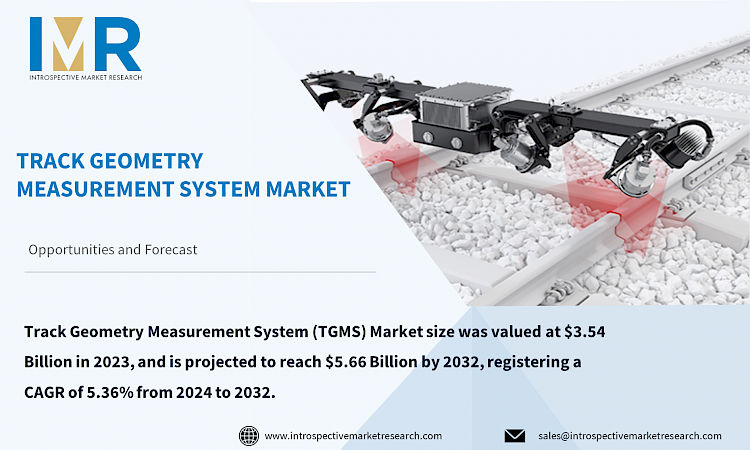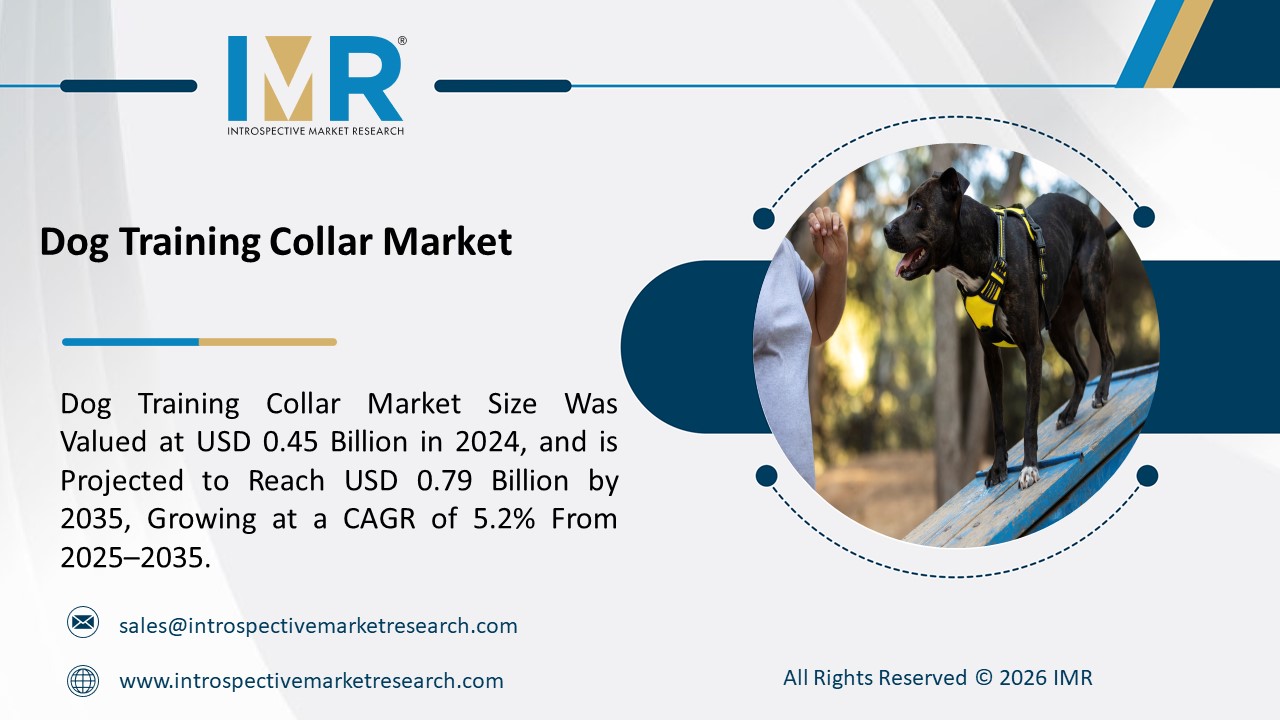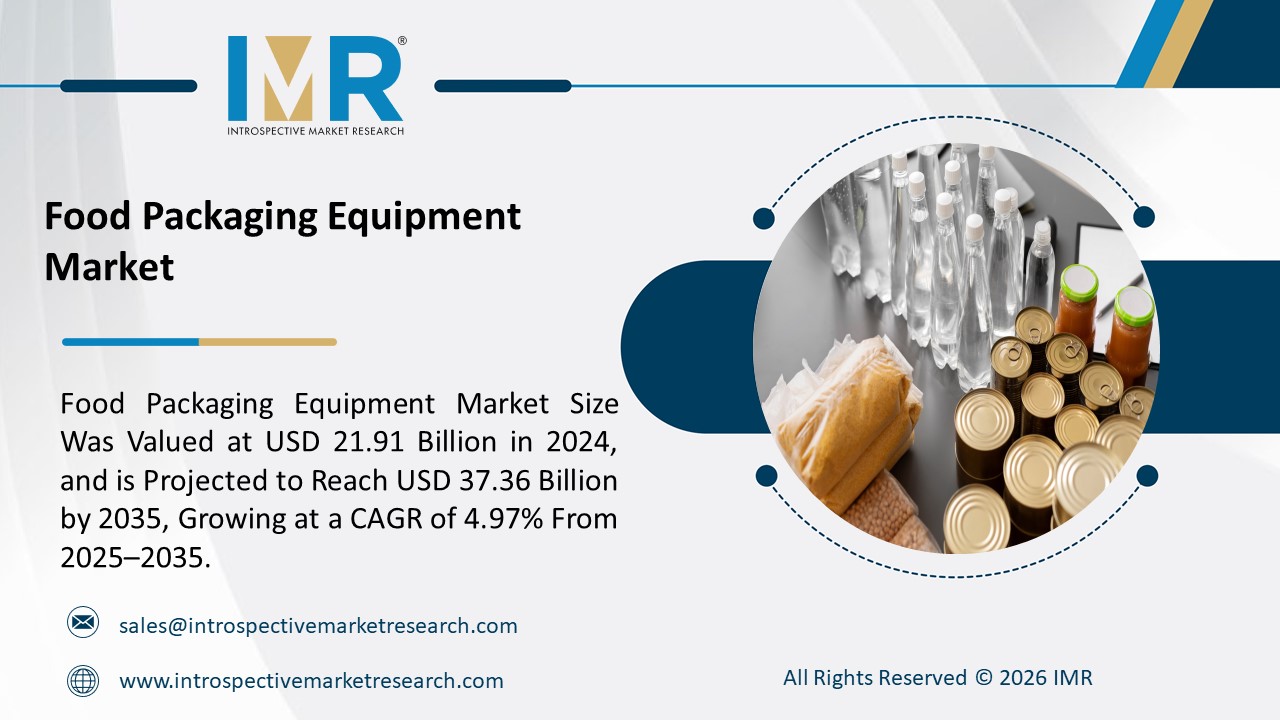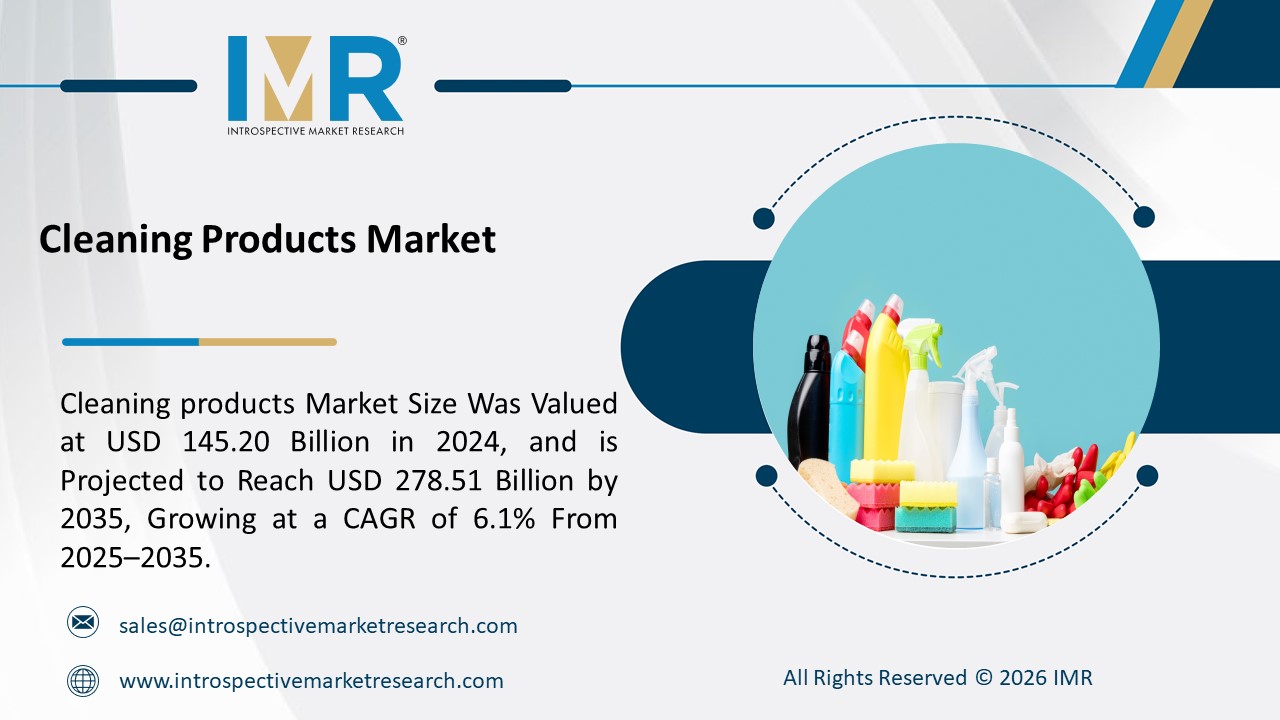Track Geometry Measurement System (TGMS) Market
According to a new report published by Introspective Market Research, titled, ?Track Geometry Measurement System (TGMS) Market by Type, Operation Type, Railway Type, and Component: Global Opportunity Analysis and Industry Forecast, 2024?2032,?
the Track Geometry Measurement System (TGMS) Market size was valued at $3.54 Billion in 2023, and is projected to reach $5.66 Billion by 2032, registering a CAGR of 5.36% from 2024 to 2032.
TheTrack Geometry Measurement System (TGMS) Marketis used in railway infrastructure management to evaluate the geometric properties of the railway. It uses a variety of sensors and gauges to accurately collect data on parameters such as track spacing, alignment, curvature, and transverse plane.
The Track Geometric Measurement System (TGMS) finds application in the maintenance and management of railway infrastructure. This offers many advantages and promises to increase demand in the future. In particular, TGMS is used to estimate and monitor the geometric parameters of railway tracks, including track width, alignment, curvature, and transverse plane. By continuously monitoring these parameters, TGMS helps railway authorities detect deviations from optimal track geometry, enabling timely maintenance measures to prevent accidents and ensure the smooth operation of trains.
According to the Track Geometry Measurement System (TGMS), Market Market is segmented into Type, Operation Type, Railway Type, Component, and Region. By Type, the market is categorized into Gauge, Twist, Cant and Cant Deficiency, Vertical Profile, Curvature Others. By Operation Type, the market is categorized into Contactless and Contact. By Railway Type, the market is categorized into High-Speed Railways, Mass Transit Railways, Heavy Haul Railways, and Light Railways. By Component, the market is categorized into Software, Lighting Equipment, Navigation Equipment, Communication Equipment, and Computers. By region, it is analyzed across North America (U.S.; Canada; Mexico), Eastern Europe (Bulgaria; The Czech Republic; Hungary; Poland; Romania; Rest of Eastern Europe), Western Europe (Germany; UK; France; Netherlands; Italy; Russia; Spain; Rest of Western Europe), Asia-Pacific (China; India; Japan; Southeast Asia, etc.), South America (Brazil; Argentina, etc.), Middle East & Africa (Saudi Arabia; South Africa, etc.).
The proliferation of high-speed and urban rail systems is a major catalyst for the expansion of the Track Geometry Measurement Systems (TGMS) market. All over the world, governments are investing in improving railway infrastructure to meet the growing demand for sustainable and efficient transport solutions. The increased emphasis underscores the importance of ensuring the safety and reliability of rail networks, especially amid the unique challenges presented by high-speed and urban rail traffic characterized by high speeds and heavy traffic schedules. Consequently, there is a growing need for advanced track inspection techniques such as TGMS to accurately estimate and maintain track geometry parameters. The strict safety requirements and performance criteria of high-speed rail and urban rail systems require robust track control solutions. TGMS provides railway authorities with a continuous monitoring capability that facilitates the detection of deviations from optimal track geometry and the prioritization of maintenance activities to ensure safe and reliable operations.
Integration with cloud-based platforms and IoT solutions stands out as an important opportunity to contribute to the expansion of the Track Geometry Measurement System (TGMS) Market market. In an era of rapid technological development, there is a growing demand for interconnected and intelligent solutions aimed at improving the operation and management of railway infrastructure. By integrating with cloud-based platforms, TGMS can effectively leverage the scalability, accessibility, and robust data storage offered by cloud services to facilitate seamless data management and analysis. Integration with IoT solutions allows TGMS to leverage real-time data collection and analysis capabilities. Using IoT sensors and devices deployed along the railway, TGMS can collect real-time comprehensive information on various track geometry parameters, track conditions, and environmental factors. This feature enables preventive maintenance measures and enables railway authorities to quickly identify and address potential problems, improving the safety and reliability of railway operations.
Global Track Geometry Measurement System (TGMS) Market, Segmentation
The Track Geometry Measurement System (TGMS) Market is segmented based on Type Operation Type, Railway Type, Component, and region.
Railway Type:
The Railway Type segment is further classified into High-Speed Railways, Mass Transit Railways, Heavy Haul Railways, and Light Railways. Among these, the Mass Transit Railways sub-segment accounted for the highest market share in 2023. The mass transit rail segment is expected to lead the growth of the Track Geometry Measurement Systems (TGMS) market and form a dominant position in the industry. As mass transit systems proliferate in urban areas around the world, the need for advanced technical solutions to maintain the safety, reliability, and efficiency of rail networks increases. TGMS plays a key role in this, as it provides accurate and timely information on track geometry parameters, enabling rail operators to effectively monitor and maintain track conditions. Mass transit railroads operate in densely populated urban landscapes, where safety and operational efficiency are paramount. By implementing TGMS solutions, railway authorities can systematically conduct routine inspections, identify potential problems, and proactively address maintenance requirements to mitigate disruptions and ensure passenger safety.
Operation Type:
The Operation Type segment is further classified into Contactless, and Contact. Among these, the Contactless sub-segment is anticipated to show the fastest growth by 2032. The non-contact segment is poised to lead the expansion of the Track Geometry Measurement Systems (TGMS) market and strengthen its dominance in the industry. As safety and efficiency become increasingly important in rail transport, there is a growing demand for innovative solutions that reduce physical contact and improve the automation of track inspection processes. Contactless TGMS systems use advanced technologies such as LiDAR (light detection and ranging) and radar to remotely collect accurate information on track geometry parameters, eliminating the need for direct physical contact with the tracks. Non-contact TGMS solutions offer several advantages over traditional contact-based systems, such as higher accuracy, less maintenance downtime, and better personal safety. By eliminating the need for physical contact with the track, non-contact TGMS systems reduce accidents and injuries associated with manual track inspection.
Region:
The Track Geometry Measurement System (TGMS) Market in Asia-Pacific is projected to show the fastest growth by 2032. Asia Pacific is poised to emerge as the most significant growth engine for the Track Geometry Measurement Systems (TGMS) market. The region is experiencing rapid urbanization, increased population density, and large-scale infrastructure development projects, leading to a demand for efficient and reliable rail transportation systems. As countries in the Asia-Pacific region invest heavily in expanding and modernizing their railway networks to meet growing transport demands, the adoption of TGMS technologies is expected to accelerate significantly. The diverse geographical terrain and different climatic conditions of the Asia-Pacific region present particular challenges in the maintenance of railway infrastructure. TGMS solutions provide accurate and automated track inspection capabilities that enable rail operators to effectively monitor and manage track conditions in a variety of environments.
Some of The Leading/Active Market Players Are-
- Ensco, Inc. (U.S.)
- Trimble Inc. (U.S.)
- Bentley Systems (U.S.)
- Harsco Corporation (U.S.)
- Siemens Mobility GmbH (Germany)
- Goldschmidt Thermit Group (Germany)
- ERTMS Solutions (France)
- Fugro (Netherlands)
- Amberg Technologies AG (Switzerland)
- Egis (France) and Other Active Players
Key Industry Developments
- In April 2023, an innovative Rail Infrastructure Measuring System was introduced by Siemens Mobility. This cutting-edge device measures track geometry with extreme accuracy and efficiency using LiDAR technology.
- In November 2022, Ensco and Fugro formed a strategic alliance to pool their respective strengths in geotechnical services and railway inspection. The goal of this partnership is to offer more thorough track evaluation solutions.
Key Findings of the Study
- The Track Geometry Measurement System (TGMS) Market, valued at $3.54 billion in 2023, is projected to reach $5.66 billion by 2032, with a CAGR of 5.36%.
- Government investments in high-speed and urban rail systems globally drive the need for advanced track inspection techniques like TGMS to ensure railway safety and reliability.
- Integrating TGMS with cloud-based platforms and IoT solutions presents significant growth opportunities, enabling real-time data collection, preventive maintenance, and improved railway operations.
- The Asia-Pacific region is expected to experience the fastest growth in the TGMS market due to rapid urbanization and substantial investments in railway network expansion and modernization.






